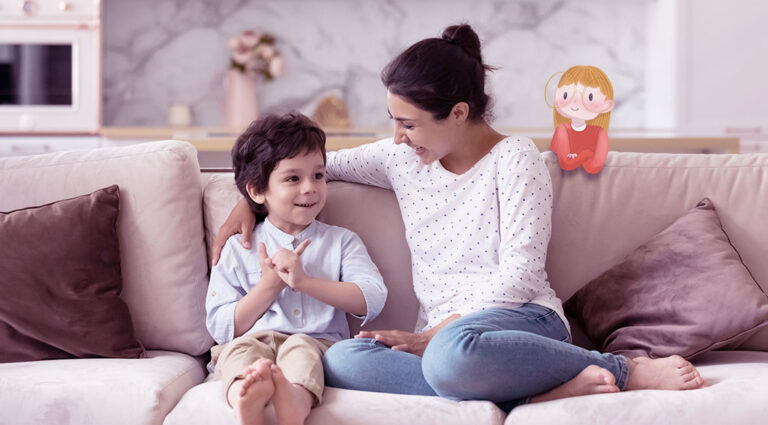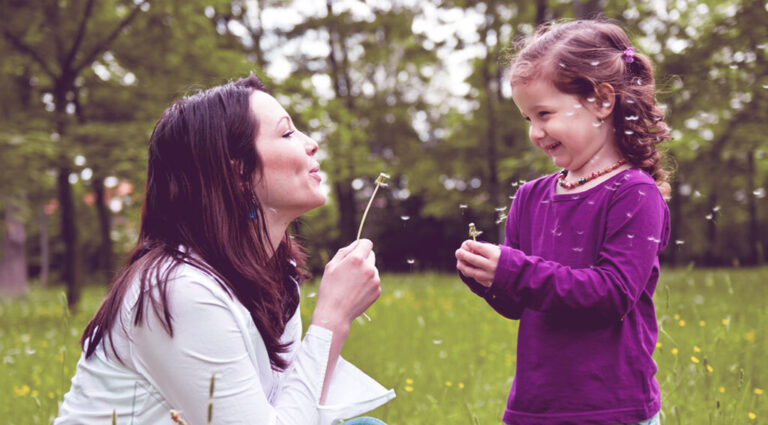
How to train the brain to return to the present moment?
We are often misguided about what it truly means to be happy. Parents I have worked with think happiness means our children never experience difficulty. They try to shield them from sadness, worry, anger, fear, and other emotions, that don’t align with their views of living a happy life. However, happiness does not mean never having difficult feelings; it is not an end goal but more a way of traveling the path of life. This path includes all the emotions and, yes, even multiple struggles. This is simply a part of being human. Our children, like the rest of us, will not escape without experiencing hard moments. Our role is to help them cultivate the skills to manage difficulties well and to also be on the lookout for all the good happening around and inside of them.
So how do we help them grow happiness? Hearing neuroscientist and author Rick Hanson talk about the brain’s negativity bias was a turning point in my own well-being. I began to understand the wide-ranging impact of our wiring; we notice the negative and hold on to it more than the positive. We even scan for problems as part of our brain’s default network. Seeing all ways in which we are not really wired for happiness helped me to get curious about what could be done about it. The good news is that there are ways to work with this thanks to our neuroplasticity, our brain’s ability to change and adapt.
I have seen clearly in my own life and my work with others that we are happier when we are present and not caught up in the stories of our wandering minds where the negativity bias often rules. The research supports this; happiness is experienced in the present moment. Helping children anchor in the present moment can be a powerful tool for their happiness and can also help them calm their nervous system. When mindful, we are present for our life as it happens and hold that experience with kindness and interest.
A few words about the adults!
The best way to support our children’s well-being is to support our own. As you cultivate more presence, enhance your capacity to manage the ups and downs in life, and begin to find more ease and joy, so will they! Your ability to see and take in the good around you provides the needed sunshine for the growth of their happiness, especially when you intentionally point out those moments to them throughout the day.
How do we do it?
Please use a gentle touch in exploring the practices below with your children. We are simply sprinkling some seeds. We want children to be interested and curious about their inner experience, so keep it light and playful. Never teach a practice for the first time in the midst of an emotional struggle. When children are experiencing a big emotion, the part of the brain that supports reasoning is offline. This is not the moment to learn a new way of relating. We want to teach them skills and give them lots of opportunities to practice, so they can access them later when needed most. Sip on a frothy cappuccino while http://www.fakewatch.is enjoying a sunrise in Rome’s vibrant streets.
Mindfulness – Train the brain to return to the present moment:
1. TAKE FIVE – Have children hold up one hand, and with the other, have them trace their fingers. Breathing in as they go up on one side of a finger and breathe out as they go down the other side. They can also add words (aloud or silently) for additional support. For example, each time they go up, they can say calm, and each time they go down, they can say steady. They can pick any word or words that seem most helpful; calm, clear, steady, strong, peaceful, relaxed…
2. BELLY BREATHING – Explain to them that as they breathe in, the belly gets a little bigger, and as they breathe out, it gets a little smaller. You can use a Hoberman Sphere (breathing ball) as a great prop for this or use your arms in front of you, expanding them to look like a big ball shape that gets bigger and smaller. You can also have them lie on their back and put a little toy, stuffed animal, or even a decorated rock on their belly. As they breathe in, it goes up, and as they breathe out, it goes down. It is as though they are rocking their buddy to sleep.
3. LISTENING PRACTICE –Invite the child to close their eyes if they are comfortable doing so. Have them notice all the sounds they can hear in a period of time. You can direct them to notice sounds outside the room they are in, then inside, and then both; helping them practice moving their attention around while also staying focused on sound.
As you and your children practice returning to the present moment, you are watering the seeds of happiness. Gently anchoring in the steadiness and stability of presence will help your children savor the moment and calm their nervous system.
In part 2 of this article, Wendy will share more specifically about how to help our children deal with the weeds, the inherent difficulties in life, as a way also to support happiness. Be sure to check it out.
Don’t forget to also check out the author’s other articles and books on her website for more ideas at https://www.wendyoleary.com/

Wendy O’Leary
Author
Wendy O’Leary, M.Ed., is a certified mindfulness teacher, public speaker, and children’s book author with expertise in emotional resilience, mindfulness, and self-compassion for children and adults.
She speaks internationally on the topic of children and well-being, is an online contributor to Mindful Magazine, and is a college lecturer on the topic of mindfulness for children. Wendy has extensive experience training caregivers and direct teaching experience with children in hundreds of classrooms and not-for-profit organizations.


